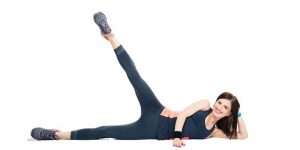Snow sports, such as skiing and snowboarding, can be exhilarating but can also lead to severe injuries if you are not properly prepared for these activities.

Common injuries from snow sports may include knee injuries (i.e. ACL and MCL strains and ruptures), shoulder injuries (i.e. dislocations, rotator cuff tears), and head injuries (i.e. concussions, whiplash). Many people can experience soreness and aches in their lower backs, necks, hips/pelvis, calves, and feet from simply withstanding the physical demands these sports place on the body.
Skiing and snowboarding require some level of cardiovascular fitness, strength, stability, and coordination; however, you do not necessarily need to train like a professional athlete. You can benefit from some form of strength and endurance training as long as they focus on core, quads, glutes, hamstrings, and calves. Watch the video below to see some strength and stability exercises we recommend for snow sports training:
Core Strength/Stability Exercises for Snow Sports:
- 1. Weighted squats:
- Start with your feet slightly wider than shoulder width apart. Hold medium dumbbells in front of your shoulders.
- Bend at your hips and knees until your knees are close to a 90-degree angle, then straighten your legs back to starting position, then repeat.
- Keep your back straight and do not let your knees collapse inward.
- Aim for 3 sets of 12, 30 second breaks in between sets.
- 2. Cable lunges:
- Start in a standing upright position. Hold both ends of the cable bands anchored behind with your elbows bent.
- Take a step forward into lunge position, maintaining the pull of the cable bands.
- Step back into starting position, then repeat.
- Aim for 3 sets of 10 lunges each side, 30 second breaks in between sets.
- 3. Lateral walks with Band:
- Start with your feet slightly wider than shoulder width apart. Have a medium resistance band looped around your ankles.
- With your knees slightly bent, take a step out to the side with the other leg following, then repeat.
- Aim for 5 sets of 5 steps each side, 30 second break in between sets.
- 4. Standing Hip Rolls:
- Start with both feet together, knees bent. Place your hands on your hips for stability.
- Lift one foot off the ground and draw your leg outward, then rotate your hip outward and focus on balancing on the standing leg.
- Reverse the motion, the repeat.
- Aim for 2 sets of 10 each side, 30 second breaks in between sets.
- 5. Single Leg BOSU Balance:
- Start with both feet on a BOSU, knees slightly bent.
- Lift one foot off the ball and focus on balance on the standing leg.
- Aim for 5 sets of 30 seconds holds on each side, 30 second breaks in between.
- 6. Tall Kneeling Ball Balance (against a wall for support!)
- Start with both knees kneeling on a physioball. Ensure you are next to a wall for arm support.
- Carefully come into a tall kneeling position on the ball and focus on engaging your core to maintain balance.
- Aim for 3 sets of 30 second holds, 30 second breaks in between sets.
- 7. Twisted mountain climbers
- Start on the floor with your arms and legs extended in a high plank position.
- Bring your knee towards the opposite elbow, bring it back to starting position, then repeat on the other side.
- Aim for 3 sets of 45 seconds, as many reps as possible within that time range.
Written by Kimberly Le, PT, DPT















